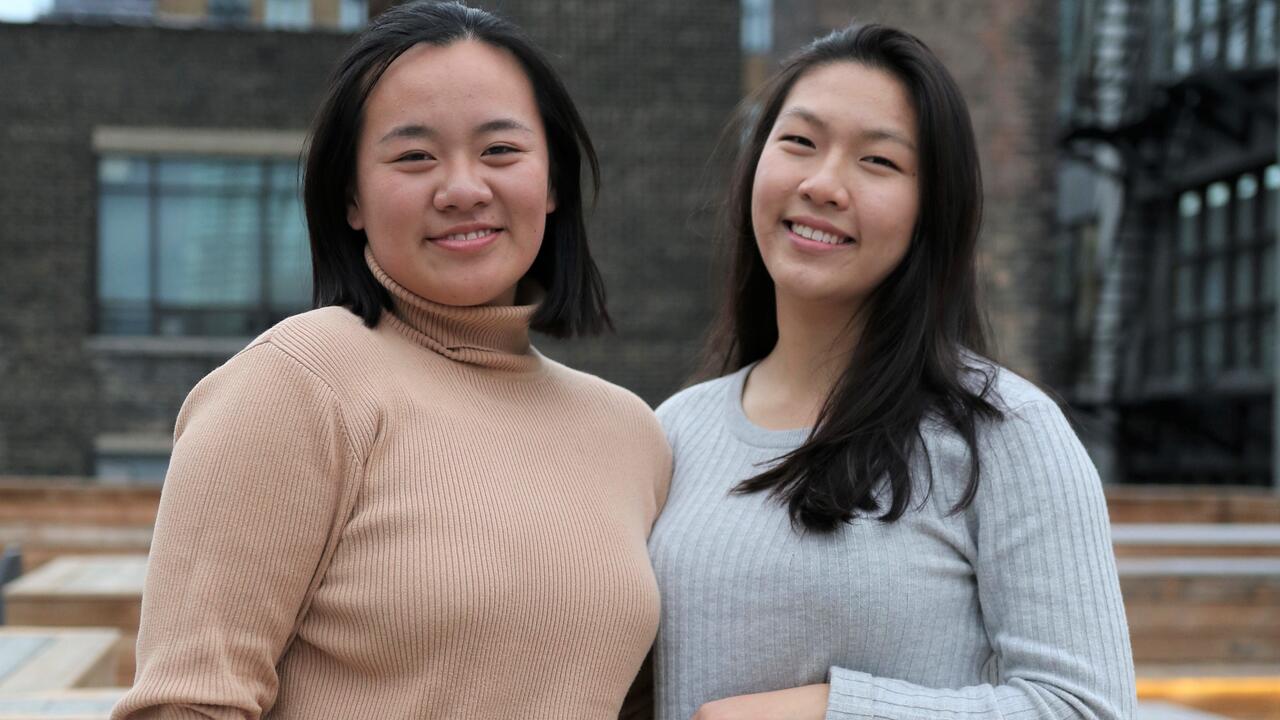
Crying out loud
Engineering students, friends create campus heat map to share tearful times, places and stories

Engineering students, friends create campus heat map to share tearful times, places and stories
By Brian Caldwell Faculty of EngineeringLeslie Xin and Queenie Wu don’t mind admitting now that they did a lot of crying during their first year as engineering students at the University of Waterloo.
But at the time, feeling alone and overwhelmed by all the new demands placed on them, they were both so ashamed of their tears that they hid them.
That changed as Xin and Wu became close friends and learned they had actually struggled with many of the same emotions.
“Queenie and I bonded over the mutual fact that we have cried a lot on campus,” said Xin. “Realizing that someone else went through something similar was incredibly comforting and reassuring.”
Two years later, the friends are now drawing on their experiences in an innovative project called Waterworks to share the benefits of sharing strong emotions and let other students know they aren’t alone either.
Xin and Wu, both 21, combined their interests in art and engineering to create a heat map of campus showing places students have cried, with links to a representative sample of stories on the circumstances behind those tears.
Data was collected by asking students in an anonymous Reddit forum where and why they have cried, as well as what helped them feel better and other related questions.
Xin and Wu were surprised to receive over 300 initial responses and there have been 100 more since the project received media coverage this week. Students have also inquired about making their own maps at other universities.
The idea for the project grew out of weekly art sessions Xin and Wu use to socialize via video while separated by COVID-19. They hope their map project, which includes suggested resources for people who may be in need of more assistance, helps other students feel more connected too.
“It’s something that unites us and really illustrates the idea of being together,” Wu said. “Especially at a time when we are physically isolated, the idea that we have shared this space before is something we hope is really powerful.”
Submissions so far include students who cried in the library under the stress of first-year exams, in a lab after pulling an all-nighter and, for good reasons, in a lecture hall after meeting former Canadian astronaut Chris Hadfield.
Now in their third year of the systems design engineering program, the friends stress crying is a universal experience, not something to be ashamed of, and that it is triggered by a full range of normal human emotions.
“Crying is really a very healthy way to begin dealing with how you are feeling and begin talking about it,” said Wu, who grew up thinking tears were a sign of weakness. “We want to normalize that. It shouldn’t just be that you reach out during a crisis, when you’re having a breakdown.”
Photo: Queenie Wu (left) and Leslie Xin are friends and third-year systems design engineering students.

Read more
Here are the people and events behind some of this year’s most compelling Waterloo stories

Read more
A winter holiday message from President Vivek Goel

Read more
The Waterloo community comes together to remember, reflect and respond to gender-based violence
The University of Waterloo acknowledges that much of our work takes place on the traditional territory of the Neutral, Anishinaabeg, and Haudenosaunee peoples. Our main campus is situated on the Haldimand Tract, the land granted to the Six Nations that includes six miles on each side of the Grand River. Our active work toward reconciliation takes place across our campuses through research, learning, teaching, and community building, and is co-ordinated within the Office of Indigenous Relations.